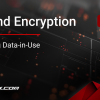Speaking in Code: 5 Essential Ways to Interface With HSMs

Let’s talk HSM integration
Hardware Security Modules (HSMs) are physically and logically secure cryptographic devices. They provide a secure environment in which to perform encryption tasks, store encryption keys, and manage keys.
HSMs can be interacted with in different ways. Off-the-shelf HSM solutions may feature proprietary software and management interfaces through which users can issue commands. HSMs often integrate with applications via application programming interfaces (APIs). Through the API, an application can call an HSM to perform cryptographic functions, such as encrypting user data or rotating keys.
All of these considerations fall into the category of integration. Integration is imperative for systems architects and IT managers everywhere. When integration goes smoothly, projects get completed on time, and everyone wins. But when integration stalls, it creates headaches with no easy cure.
This blog post breaks down the go-to methods for interfacing with HSMs to demystify the complex paths through the integration journey. As you’ll see, there’s no universal method. Each method caters to different use cases, standards, and preferences.
Let’s dive in:
Standards-based interfaces
A standards-based interface is a set of rules that defines how different systems communicate with each other. In cryptography, standards-based interfaces provide a common language for cryptographic algorithms, protocols, and solutions.
Many HSMs support standards-based interfaces and protocols, allowing different systems and applications to talk to each other.
“Standard” examples
- PKCS#11 (Public-Key Cryptography Standards #11): A widely used API standard for interfacing with cryptographic tokens, including HSMs.
- KMIP (Key Management Interoperability Protocol): This protocol allows communication between key management systems and HSMs (as well as some other cryptographic devices)
- Open Cryptographic Framework (OCF): An open standard for a cryptographic framework that supports HSMs.
- Microsoft CryptoAPI (CAPI): In Windows environments, HSMs often integrate with Microsoft’s CryptoAPI, allowing applications to use HSM functionality through the standard Windows cryptographic architecture.
- Java Cryptography Architecture (JCA): Java applications can interact with HSMs using the Java Cryptography Extension (JCE) and the Java Cryptography Architecture. HSM vendors may provide specific Java libraries or interfaces for seamless integration.
Network-based interfaces
Some HSMs support network-based interfaces, allowing remote access to the HSM over a network. This can be useful for scenarios where the HSM needs to be centralized and accessed by multiple systems.
A great example of a network-based interface are RESTful web APIs. RESTful APIs allow applications to communicate with the HSM over standard HTTP methods. This dramatically simplifies integration, especially in web-based or cloud environments.
Proprietary APIs
Some HSM vendors offer proprietary APIs for interfacing with their devices. These APIs may provide additional features tailored to the particular capabilities of the HSM. Developers using proprietary APIs may use vendor-specific SDKs (Software Development Kits) to integrate HSM functionality into their applications.
An example is Futurex’s Excrypt API. This proprietary API is customized to integrate Futurex solutions with numerous business applications. The Excrypt API also communicates with common standards-based interfaces such as PKCS #11 and KMIP. Clients that previously coded to those standards don’t have to do extra integration work on the back end.
Cryptographic Libraries
A cryptographic library is a collection of software functions or routines that implement various cryptographic algorithms and protocols. These libraries provide a set of programming interfaces that developers can use to incorporate cryptographic functionality into their applications.
Cryptographic libraries reduce the complexity of keeping track of cryptographic algorithms and operations. They provide developers with a convenient way to combine secure communication and data integrity in their applications.
Examples
OpenSSL and Bouncy Castle are examples of cryptographic libraries. They offer various cryptographic functions, including encryption, decryption, hashing, digital signatures, and more.
Context is key
When choosing an interface method, organizations should take into consideration factors like interoperability, standardization, ease of integration, and specific security requirements should be considered. The choice often depends on the particular use case and the existing infrastructure in which the HSM is deployed.
FAQ
What are the key considerations organizations should weigh when deciding between different HSM integration methods?
Organizations should consider factors such as interoperability, standardization, ease of integration, and specific security requirements when choosing an HSM integration method. The decision may depend on the particular use case and the existing infrastructure where the HSM is deployed. Examining the trade-offs and benefits of each method in relation to the organization’s goals and environment is crucial.
What are the advantages and challenges of using vendor-specific APIs like Futurex’s Excrypt API for tailored HSM integration strategies?
Proprietary APIs, like Futurex’s Excrypt API, offer a tailored approach to HSM integration by providing functionality customized to specific capabilities of the HSM. The advantages of such vendor-specific APIs include enhanced features that align with the unique capabilities of the associated HSM. However, organizations may face challenges related to vendor lock-in, limited interoperability, and potential dependencies on specific vendor technologies. Careful consideration of these factors is essential for organizations deciding whether to adopt a vendor-specific API in their HSM integration strategies.
How do standards like PKCS#11 and KMIP improve HSM interoperability and communication with different systems or applications?
Standards-based interfaces such as PKCS#11 and KMIP enhance HSM interoperability by providing a universal language for cryptographic algorithms and protocols. These interfaces establish common rules, allowing seamless communication between HSMs and diverse systems or applications. PKCS#11 is a widely adopted API standard for cryptographic tokens, including HSMs, while KMIP facilitates communication between key management systems and various cryptographic devices. Adopting these standards ensures uniform cryptographic operations and promotes compatibility across different platforms, streamlining HSM integration for efficient and consistent functionality.






